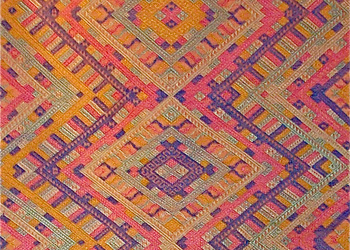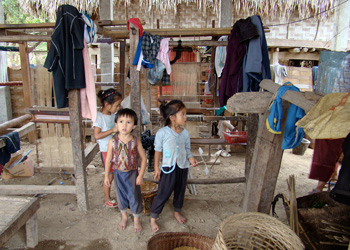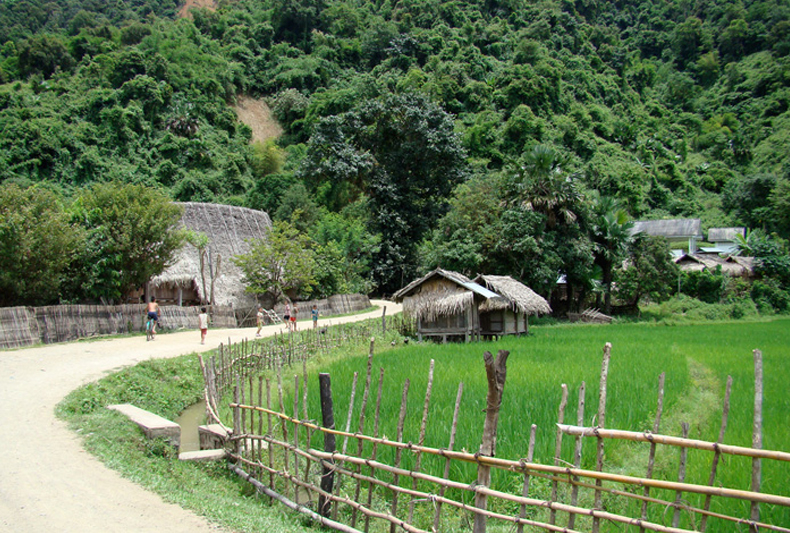We approached Muang Vaen, a mid-sized weaving village of perhaps 60 homes, on a one-lane dirt road, 1-1/2 hours through the jungle from a paved "highway" and 3 hours west of the small city of Xam Neua. The village is on the side of a lush river valley – lush especially from August's monsoon and the extending rice fields.

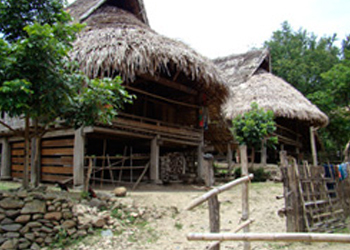
The village houses are wood-framed and on 8 foot stilts, with bamboo walls and reed roofs that arc over the decks on either end of the house; a few homes have corrugated metal roofing. Men sit on the decks weaving baskets and tying weights onto their fishing nets, and women with small children sit to the side and chat, their hands busy with some task. Some homes have a stick-woven fence on one or more sides to protect decorative flowering shrubs from goats, pigs, and water buffalo. Under the houses are the farming equipment, carved-out wooden pig troughs, chickens, drying corn, and a hundred other items. To the side of each house are the weaving areas, usually 2-4 looms, set up under roofs for shade or rain protection. A few coconut and other trees emerge from the hard-pack to mercifully shade the dusty village.
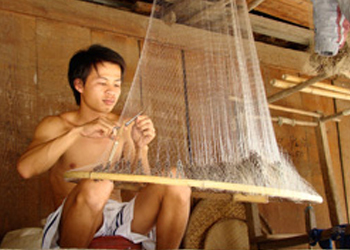
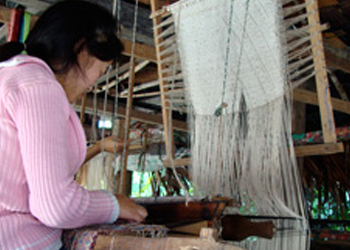
The youngest person we saw weaving looked about 9 years old, and she was weaving one of the complex shaman cloths.
We strolled through the village noting all the various weaving activities: a man carving and constructing a new wooden loom; vats of dye being made from bark; skeins of recently-dyed silk hanging to dry; a warp being wound (the warp is the long threads first strung on the loom); threads being wound into balls or onto sticks of the right size for weaving; and many women, young and old, weaving in small groups or alone (sometimes with male admirers keeping them company!). The youngest person we saw weaving looked about 9 years old, and she was weaving one of the complex shaman cloths with about 40 thread color changes on each supplemental weft row (the weft is the threads that weave from left to right, at a 90 degree angle to the length's warp threads). We were invited to join a group for lunch on their deck, but we declined, concerned that they wouldn't have enough food for all of us. We walked past the river - adults were bathing or washing clothes, kids were swimming and playing, and the propeller-spinning hydro-power generators in the river channels were sending 4 lines of electricity into the village. On the other side of the river and abutting the village on the two other sides were gravity-irrigated terraced rice fields – almost too brilliant a green in the sunshine to look at. A few men were working in the fields, pulling weeds from between the rice stalks and occasionally patching a wall.
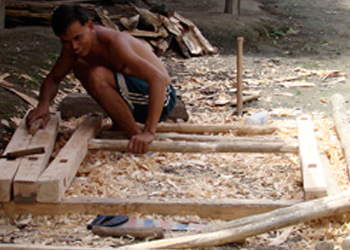
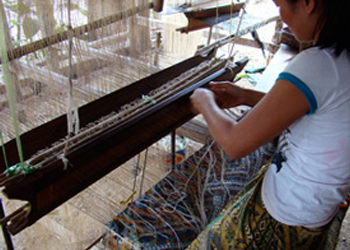
After touring the village, we entered the headman's house, where the women had congregated. Then the fun began! While sitting cross-legged on tiny, flat, hard cushions on the floor, every weaver in the village sat in an arc in front of us, and displayed piles upon piles of their handwoven, natural-dyed, silk and village-grown cotton scarves, shaman cloths, and blankets. I can't tell you how difficult it is to choose from so many exquisite textiles with the weaver of each piece watching! Each textile was unique in its coloring and style, but we couldn't get them all. The criteria we used for making our decisions included: the overall color scheme; the color interaction with the pattern; the sharpness of the pattern as determined by the tautness of the threads; any weaving, dyeing, or pattern flaws within the body of the textile; the "cleanness" of the edges; and appearance and geometric "excitement" when held up as a wall-hanging.
While the landscape and temples of southeast Asia may at times be stunning, the most exciting and rewarding adventure is connecting every day with the incredibly friendly people
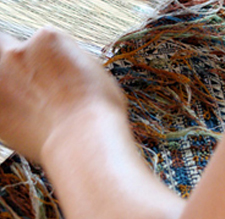
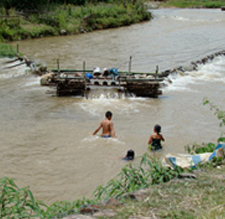
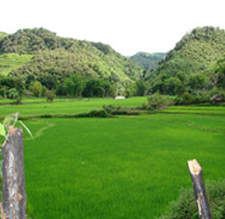
We spent nearly 3 hours just studying and choosing the Muang Vaen textiles. Throughout it were giggles from the weavers as we made faces of indecision and admiration (all the while creating "yes", "no", "maybe", and "its not perfect but it feels good" piles) and outright howls of laughter as we pleaded exhaustion as yet more fabrics were "discovered" in someone's home. While our translator, Mr. Aven, helped us glean information about the village, the weavers, and their textile patterns, some of the best interactions came from the non-verbal communications while admiring the stunning textiles, coaxing smiles out of these talented artists (and they did agree to be photographed with their pieces), or making silly faces (Josh) at the kids peaking in the windows.
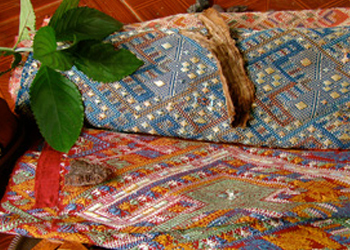
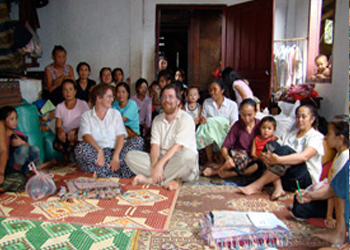
While the landscape and temples of southeast Asia may at times be stunning, the most exciting and rewarding adventure is connecting every day with the incredibly friendly people who live in thehill tribe regions of Laos and Vietnam. Their sincerity, openness and graciousness rival their immense artistic talents.
